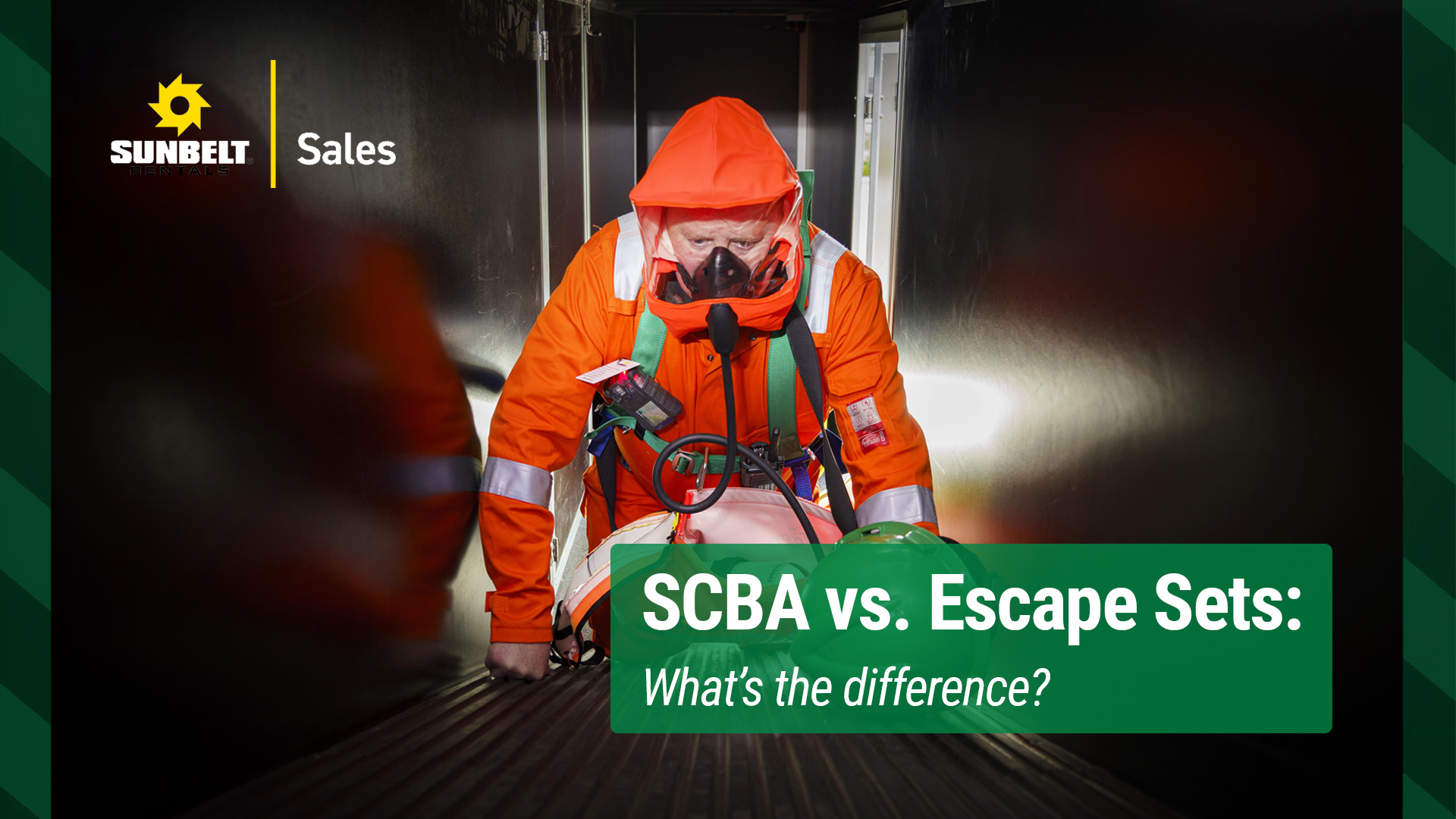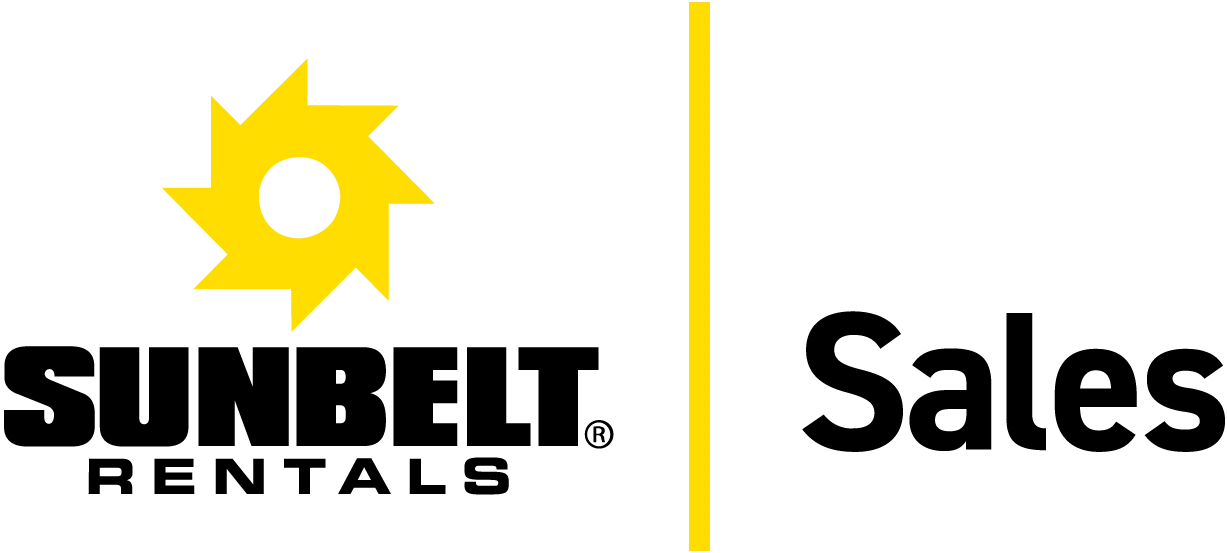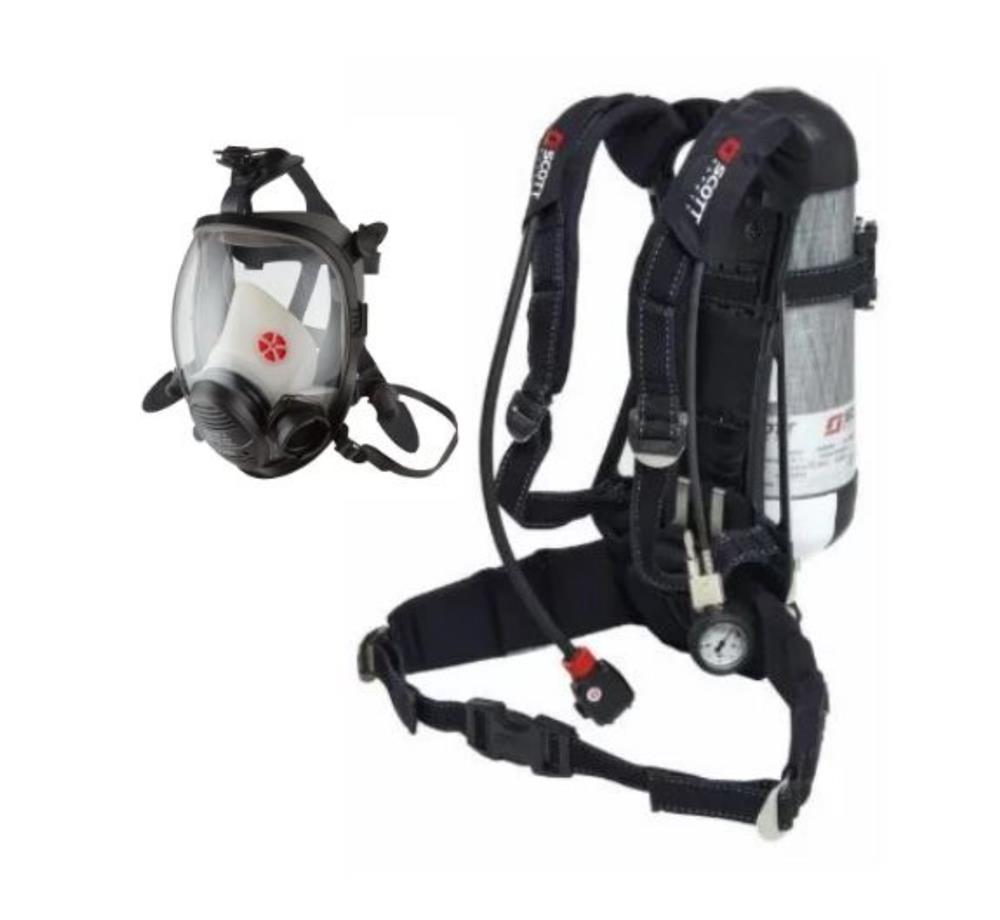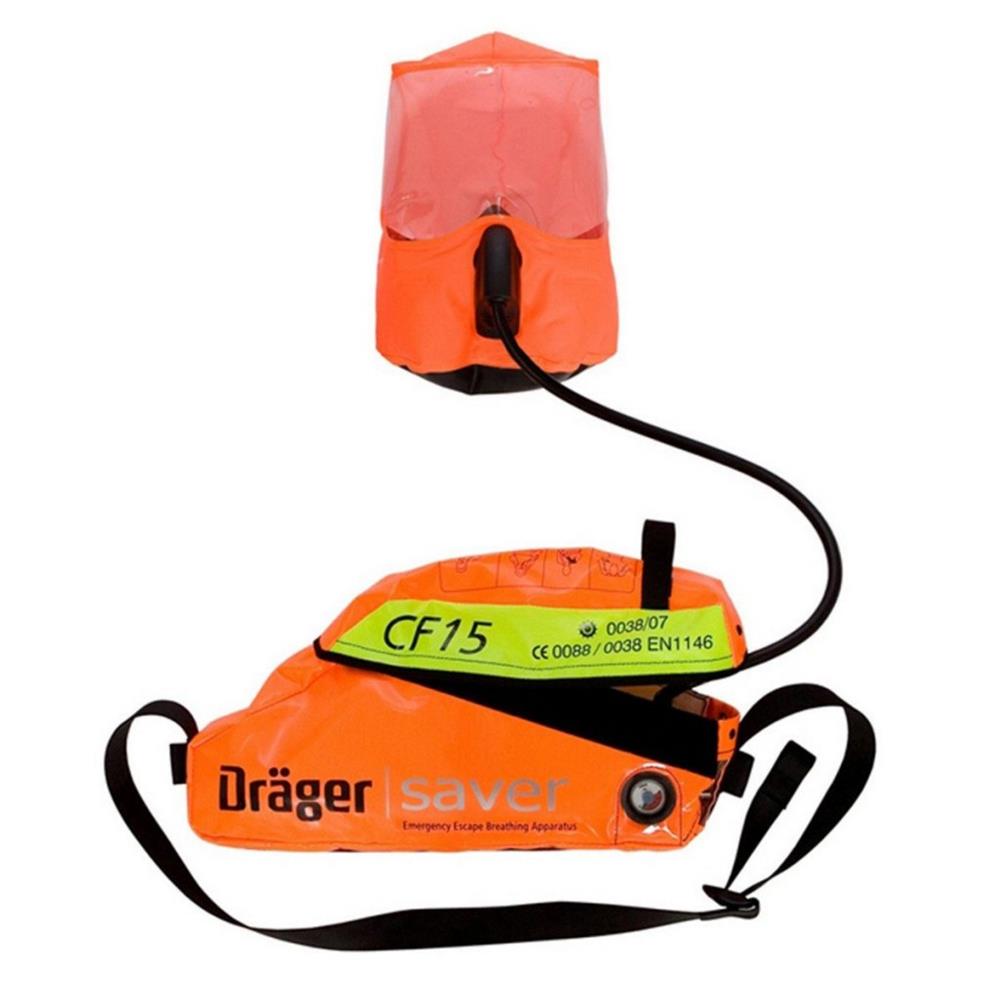
SCBA vs. Escape Sets: What's the Difference?
You don’t need reminding that without clean, breathable air, survival quickly becomes impossible. In everyday life we often take that for granted, but for people working in hazardous environments, it’s a constant concern.
Self-Contained Breathing Apparatus (SCBA) and Escape Sets
The Self-Contained Breathing Apparatus (SCBA) and Escape Sets are among the most commonly used and widely recognised portable respiratory safety equipment. Both are designed to protect workers when the atmosphere around them becomes unsafe, but they serve very different purposes and are used in very different ways.
So, what exactly sets them apart? When should you use an SCBA, and when is an Escape Set the right tool for the job? And more importantly, how do you choose the right system to ensure your team stays protected, compliant with safety regulations, and able to respond effectively when it matters most?
Let’s take a closer look at both types of equipment, what they are, how they work, and when each should be used.
What is an SCBA?
A Self-Contained Breathing Apparatus (SCBA) is a device that supplies breathable air from a cylinder worn on the user’s back, allowing safe breathing in environments where the surrounding air is toxic, smoke-filled, or low in oxygen. SCBAs are an essential kit for firefighters, emergency responders, rescue teams, and workers in hazardous industrial or confined space environments.
SCBA systems provide breathable air from a self-contained cylinder, allowing complete portability. An SCBA set typically includes a high-pressure air cylinder, a regulator to control the airflow, a face mask that forms a secure seal, and a harness to carry the system on your back.
Most SCBAs operate under positive pressure, meaning the air inside the mask is kept at a higher pressure than the surrounding atmosphere. This helps prevent any contaminants from leaking in.
Depending on the model, SCBAs are designed for extended use, typically providing clean air for 30 to 60 minutes or more. In addition to breathable air, they also offer eye and face protection from harmful gases and airborne hazards.
A few common questions come up when discussing SCBAs, especially around how they compare to other types of breathing systems, including airline systems (such as those you might find on an aeroplane). While SCBAs provide breathable air from a self-contained cylinder, giving the user full freedom of movement, airline systems supply air through a hose connected to a remote air source. This setup allows for a much longer air supply, often beyond 60 minutes, but at the cost of mobility as the user is tethered to the airline.
Then there's the comparison between SCBA and SCUBA; two names that sound similar and can be easily confused. While both are self-contained systems, they’re designed for very different environments. SCBAs are built for use on land in hazardous or oxygen-deficient areas, such as during firefighting or industrial rescues, while SCUBA gear is specifically made for underwater breathing.
Lastly, it’s worth noting the distinction between SCBA and BA. SCBA refers specifically to a self-contained breathing apparatus with its own air supply. BA, or Breathing Apparatus, is a broader term that includes SCBAs and airline-fed systems. In essence, all SCBAs are BAs, but not all BAs are SCBAs.
What is an Escape Set?
As the name suggests, an Escape Set is designed specifically for emergencies, when conditions suddenly become dangerous and there’s no time to waste. These devices provide a short-term supply of clean air, allowing workers to evacuate safely from environments that have quickly become toxic or oxygen-deficient.
Unlike SCBAs, Escape Sets aren't meant for extended use or for performing tasks in hazardous conditions. Instead, they’re a safety measure, kept on hand for rapid escape when the atmosphere unexpectedly turns unsafe.
Escape Sets typically deliver breathable air for a brief period, usually between 10 and 30 minutes, which is enough time to reach safety in most emergency situations. They're compact, lightweight, and highly portable, making them easy to grab and use in a hurry.
Because they're designed for simplicity and speed, they require minimal training. They can be operated even under high-stress conditions, which is exactly what makes them so valuable in emergency scenarios.
SCBA vs. Escape Sets: A Top-Level Comparison
Knowing the difference between SCBAs and Escape Sets is key to making the right call when it comes to choosing the right breathing equipment for your team and the task at hand. Below is a side-by-side comparison to help you decide.
| Feature | SCBA | Escape Set |
|---|---|---|
| Primary Use | Planned entry into hazardous or toxic environments | Emergency evacuation from suddenly unsafe conditions |
| Example Product |
|
|
| Air Duration | Typically 30–60 minutes or more | Typically 10–15 minutes |
| Air Supply Type | Self-contained positive-pressure cylinder | Positive-pressure or demand system |
| Portability | Heavier and more robust | Lightweight and compact for rapid escape |
| Training Requirements | Requires full training and certification | Minimal training needed |
| Compliance Standards | EN 137, NFPA 1981, OSHA | EN 402, OSHA |
If your team is entering hazardous environments regularly, a system like the 3M Scott ProPak SCBA is essential for safety and compliance. The Dräger Saver CF15 provides a simple, reliable solution for rapid escape during emergencies.
Deep-Dive Comparison on SCBAs vs. Escape Sets: Which Is Best For Your Needs?
Knowing the difference between SCBAs and Escape Sets is key to making the right call when it comes to choosing the right breathing equipment for your team and the task at hand. Here, we’ve summarised the key comparisons:
1. Purpose and Usage
- SCBAs are intended for planned entry into hazardous, toxic, smoke-filled or oxygen-depleted environments where professionals rely on them to perform tasks safely over extended periods. Self-Contained Breathing Apparatus is essential gear for firefighters who may be required to safely navigate smoke-filled and oxygen-depleted environments, safely handle chemical spills and hazardous substances, and rescue individuals trapped in toxic or oxygen-deficient environments. They also provide vital protection for workers in confined spaces such as tanks, pipelines, or underground chambers.
- Escape Sets are solely intended for unexpected emergency evacuation when conditions suddenly deteriorate and become unsafe, and workers need a rapid exit. They are not designed for routine tasks and should not be used by those working regularly in hazardous environments, butare made available to workers who could potentially require them. These might include workers on oil platforms and refineries, in case of emergency evacuations due to leaks or fires, workers in chemical industries as they’re crucial kit for escaping chemical leaks or sudden toxic gas exposure, and they can be used for immediate evacuation during underground mining emergencies.
2. Operational Duration
- SCBAs offer extended periods of breathable air, typically up to one hour, supporting tasks that require prolonged presence in hazardous environments.
- Escape Sets offer a much shorter duration of breathable air, generally limited to 10-30 minutes. This offers enough time to facilitate an emergency evacuation of the danger zone only.
3. Air Supply Mechanism
- SCBAs generally use a positive-pressure system that continuously provides air at a pressure higher than the surrounding environment, thus ensuring contaminants can't infiltrate the mask.
- Escape Sets may feature positive-pressure or demand systems. The positive-pressure type provides better protection but these are slightly bulkier and therefore less suited to emergency use.

4. Mobility and Weight
- SCBAs are the heavier and more cumbersome of the two due to the larger air cylinders and robust construction. While this means that they can be used for longer, it can limit the users’ mobility to an extent, particularly in tight spaces.
- Escape Sets are specifically engineered to be lightweight, compact, and easily portable. Their design prioritises mobility, enabling quick movement during an emergency when time is vital, and they can be easily stowed in locations where an emergency is at risk of occurring.
5. Training requirements
- SCBAs require proper training and certification before use. Workers must be familiar with how to wear, check, and maintain the equipment.
- Escape Sets, in contrast, are simple to use and require very little instruction, making them ideal for non-specialist personnel or as a secondary backup device.
6. Compliance and Regulations
Rigorous standards and compliance requirements govern both SCBAs and Escape Sets:
- SCBAs must comply with stringent safety standards such as NFPA (National Fire Protection Association) 1981 for firefighting equipment, OSHA (Occupational Safety and Health Administration) regulations, and EN 137. To ensure safe compliance, SCBAs must be inspected at least monthly, before use and when being cleaned.
- Escape Sets are governed by standards like EN 402 (short-duration escape apparatus) and OSHA regulations for emergency egress. They still need to be maintained regularly.
Hopefully, with the help of this article, it will be fairly easy to decide on the kind of portable respiratory safety equipment that you need for your workers.
Take a look at the Breathing Apparatus available on Sunbelt Sales or call us on 01832 770883 to speak with an expert.



